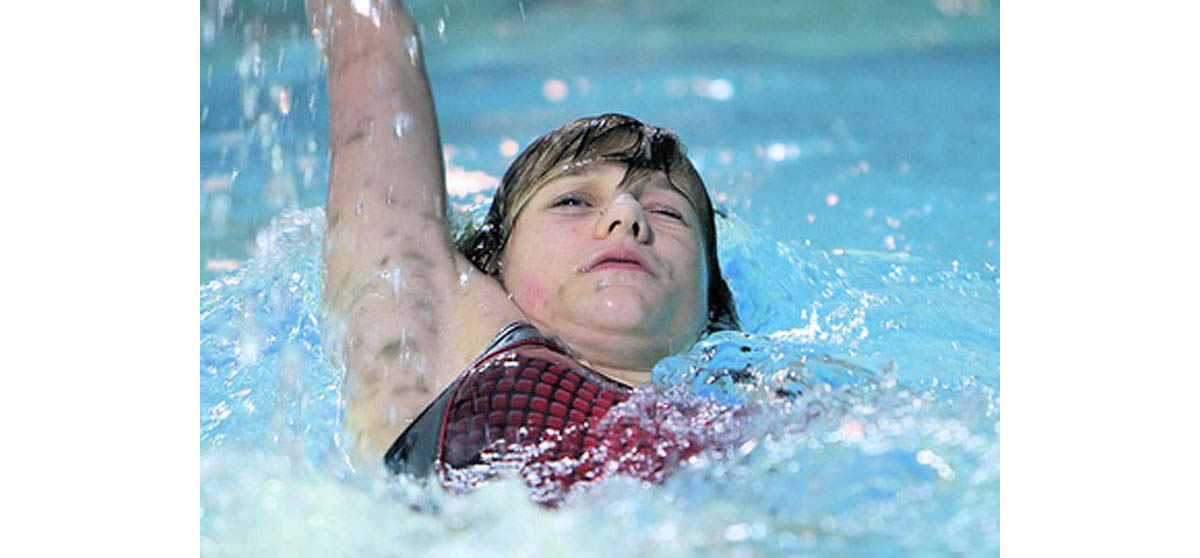Are you one of millions of Americans who's turned off of exercise because of knee and joint pain? There is an alternative way that you can still workout, lose weight, and be healthy without enduring knee pain.
Do you sometimes, or even regularly, experience knee pain during your workout sessions? This is a common occurrence, which becomes exaggerated with age. If you find that with exertion you tend to experience bouts of knee pain, the recommend first step is to consult a physician to ensure you are not causing further damage as you work out, and that it is safe to continue exercising.

In many cases a small knee injury will result in lifelong discomfort. Little can be done to completely eliminate knee pain which arises from damaged ligaments or meniscus', or from arthritis. Minimizing the pain by avoiding activities which aggravate the problem is usually the best solution.
Unfortunately, knee pain experienced during cardio activities usually discourages participation, and many people engage in fewer and fewer cardio workouts as a result, even becoming completely sedentary, which is associated with its own set of health risks. This doesn't need to happen, since there are key elements which must be avoided when you have knee pain. Understanding which movements are actually causing the pain and avoiding them is the best first step to take.
Getting a full and regular cardio workout which doesn't cause knee pain is absolutely possible with a little bit of creative thought and consideration. Changing your approach to the activities you enjoy or trying out new ones can help to restore your interest in cardio activities.
You can reap the benefits and enjoyment you once did from engaging in challenging cardiovascular workouts. Keep in mind that the US Surgeon General recommends a minimum of 30 minutes of moderate-intensity exercise just 3 times per week to maintain health.
If you experience small amounts of pain, most trainers would recommended engaging in activities up until the point of pain. For example, cycling or dancing are great activities for many who have knee problems. If a person experiences pain while pushing very hard on a cycle, a quick solution is to reduce the resistance level, and increase the revolutions per minute. This way, the intensity of the activity is still being maintained while reducing the strain on the knees.
If you're at the gym looking for an alternative to jogging, a fantastic system was developed which requires a simple stretch band and belt which are anchored to the floor. Start by anchoring the stretch band of your choice to something solid at ground level, behind where you'll be standing. Attach the belt to the handle of the stretch band and get into the belt. When the band is taut, you should be facing away from it as it pulls you down and backward. Now you can lean into it and march with exaggerated knee and arm motions. You'll be amazed at what a workout you can get in just 5 – 10 minutes to start. Remember to keep the band tight to maintain resistance and swing the knees high with each step.
Knee problems don't have to get in the way of tough, effective cardio workouts!

In many cases a small knee injury will result in lifelong discomfort. Little can be done to completely eliminate knee pain which arises from damaged ligaments or meniscus', or from arthritis. Minimizing the pain by avoiding activities which aggravate the problem is usually the best solution.
Unfortunately, knee pain experienced during cardio activities usually discourages participation, and many people engage in fewer and fewer cardio workouts as a result, even becoming completely sedentary, which is associated with its own set of health risks. This doesn't need to happen, since there are key elements which must be avoided when you have knee pain. Understanding which movements are actually causing the pain and avoiding them is the best first step to take.
Here are a few tips on what to do to avoid to reduce knee pain during exercise sessions and beyond.
High impact movements
High impact movements are those activities which involve hoping and jumping around and experiencing heavy impact on the way down. A lot of boot camps and high intensity workouts include high impact cardio exercises, which burn a lot of calories and increase your fitness levels quickly, but tend to make you feel totally exhausted in the process. Anything which causes a sudden, and heavy impact on the knees should be avoided if you have knee pain. These are exercises like jumping jacks, high knees, water sports, alpine skiing, kickboxing, and more.Stair climbing
Stair climbing is another big factor that is known to cause knee pain. If you have a stair climber at your gym or at home, it will only aggravate the problem you are facing with your knee pain. You may not be able to avoid climbing stairs in your daily life, but you can definitely steer clear of this type of workout at the gym. Avoid stair climbing type movements and cardio classes which use steps. These are quite popular in aerobics classes at at the gym, in part because nearly everyone knows how to climb stairs, but are hard on the knees because of the weight-bearing aspect, which stresses each knee with the full weight of the body. After several minutes of the movement, most people with knee problems will really feel the strain.Read more: Top 9 Cardio Myths
Running or jogging
Another big exercise type to avoid if you suffer from chronic knee pain is running or jogging. While the impact on the knees is not very hard in each step, the accumulation over several minutes causes a fair amount of pounding on the knees. The continuous force exerted on the knee joint can cause some serious pain, so running outdoors or on a treadmill is not recommended for any amount of time.Maybe you should lose a little weight?
A simple and popular solution which you may have heard is to simply lose a little weight, even as little as 10 to 15 percent of your current body weight. Many people experience knee pain even though they've never injured their knees. In many cases, this is the result of carrying around excess weight. The human body isn't designed to carry around a whole lot of extra, unnecessary weight, and after several years of carrying a heavy load, the knees will naturally show signs of wear and tear. Reducing the weight which is bearing down on the knees can alleviate pain in cases where you have an above average BMI (body mass index). Low impact exercises such as swimming are a great way to work on losing some weight without putting extra stress on your knees, but keep in mind that diet makes up about 80 percent of your weight loss success.Workouts to reduce knee pain
Getting a full and regular cardio workout which doesn't cause knee pain is absolutely possible with a little bit of creative thought and consideration. Changing your approach to the activities you enjoy or trying out new ones can help to restore your interest in cardio activities.

You can reap the benefits and enjoyment you once did from engaging in challenging cardiovascular workouts. Keep in mind that the US Surgeon General recommends a minimum of 30 minutes of moderate-intensity exercise just 3 times per week to maintain health.
Change the way you view cardio exercise
First, change the way you view cardio exercise. Most people immediately think of running on the treadmill when it comes to this type of exercise. There are many alternatives to this, including systems to mimic the running movement while increasing heart rate. The definition of cardio exercises are those which elevate the heart rate, and maintain it for several minutes. This can be anywhere from 10 minutes to 1 hour and beyond, in a trained individual.If you experience small amounts of pain, most trainers would recommended engaging in activities up until the point of pain. For example, cycling or dancing are great activities for many who have knee problems. If a person experiences pain while pushing very hard on a cycle, a quick solution is to reduce the resistance level, and increase the revolutions per minute. This way, the intensity of the activity is still being maintained while reducing the strain on the knees.
Try new cardiovascular activities altogether
Another solution is to try new activities altogether. There are a whole host of low impact cardiovascular workouts you can get involved in which will work major muscle groups and keep the heart in good condition. Swimming is a great one. There is virtually no impact on any joint except that which is exerted by the contracting muscles. Swimming is used as a rehabilitation method for people who have knee replacement surgery. With no almost no resistance, swimming workouts provide a basic cardio system which train the knee's range of motion while working the large muscle groups simultaneously. Dancing is another one you might try, they are fun and you can workout with a partner for motivation.If you're at the gym looking for an alternative to jogging, a fantastic system was developed which requires a simple stretch band and belt which are anchored to the floor. Start by anchoring the stretch band of your choice to something solid at ground level, behind where you'll be standing. Attach the belt to the handle of the stretch band and get into the belt. When the band is taut, you should be facing away from it as it pulls you down and backward. Now you can lean into it and march with exaggerated knee and arm motions. You'll be amazed at what a workout you can get in just 5 – 10 minutes to start. Remember to keep the band tight to maintain resistance and swing the knees high with each step.
Knee problems don't have to get in the way of tough, effective cardio workouts!
- Photo courtesy of quinnanya on Flickr: www.flickr.com/photos/quinnanya/3543643246
- Photo courtesy of markhaertl on Flickr: www.flickr.com/photos/markhaertl/366844015

